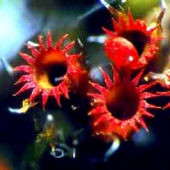Please select root levels for the menu
NZ Plants
Moss Life Cycle
The mosses (and all bryophytes) have an alternation of generations life cycle that is unusual for two reasons:
- The haploid form is the dominant generation (larger, long-lived, and photosynthetic)
- The diploid form is the lesser generation (smaller, short lived and nutritionally dependent on the haploid form).
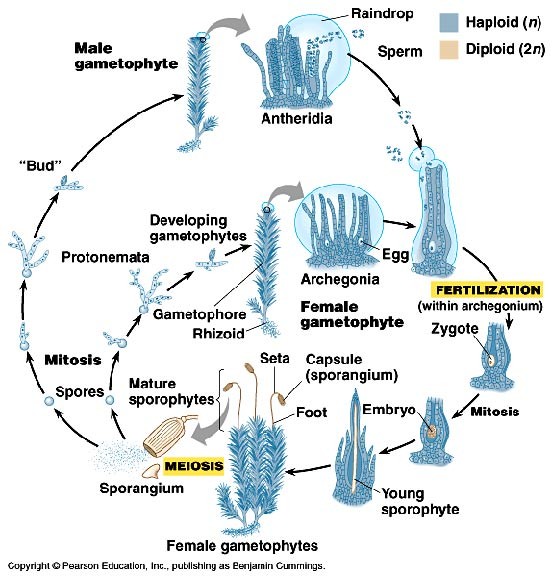
Stages in the life cycle illustrated on this website:
- Egg and sperm formation takes place in the leafy green moss plants (gametophytes).
sexual reproduction in moss
- Spore formation and release takes place in the tiny, attached spore plants (sporophytes).
the moss sporophyte
the capsule covering
how the capsule opens
- Spore germination results in a branching algal-like filament that is called a protonema (pl. protonemata; proto, first + nema, thread).
Protonemata, bud formation and moss plants
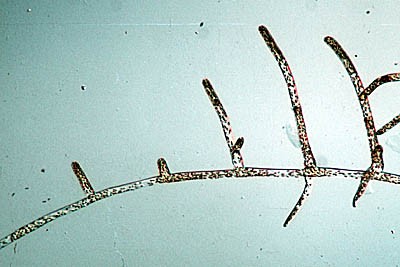
Physcomitrium turbinatum - A germinated spore gives rise to a filament of cells. The terminal (apical) cell repeatedly divides to form new cells behind it. These cells may also divide to form branches at regular intervals -
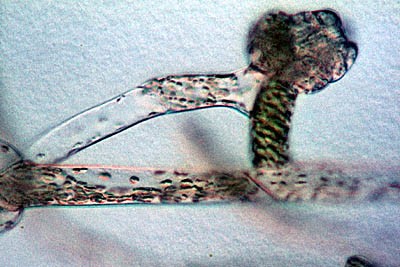
Physcomitrium turbinatum - A bud occasionally forms instead of a branch. In this photo, the bud initial is at the top, and a rhizoid initial is to the side. This bud will form leaves and a stem of a new moss plant.
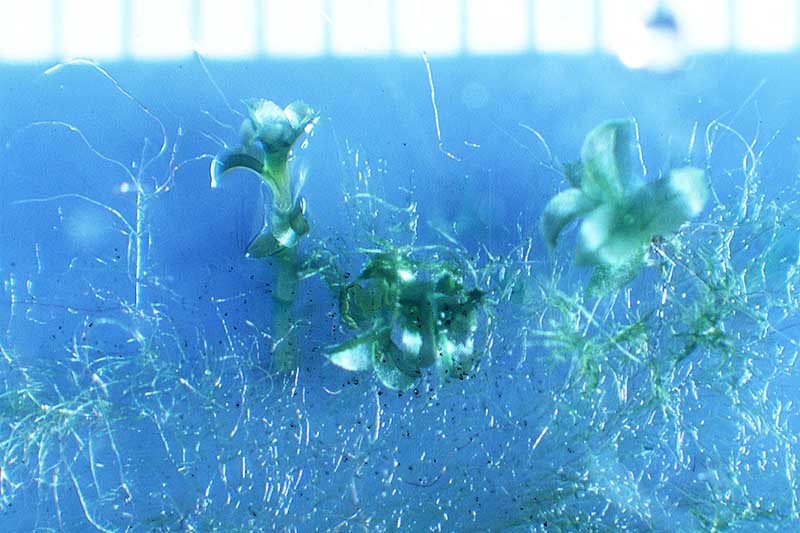
Physcomitrium turbinatum - Protonemata with small moss plants in sterile culture. Such leafy moss plants arose from the repeated divisions of the bud initials. Normally, the protonema stage then degenerates as the new plants increase in size.

